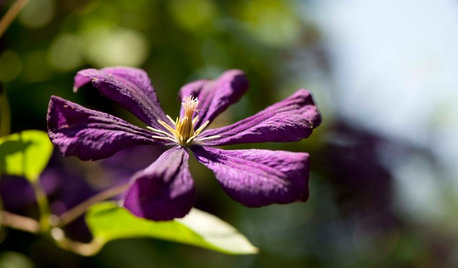Best Figs for Containers
thefigman
14 years ago
Featured Answer
Sort by:Oldest
Comments (51)
paully22
14 years agolast modified: 9 years agothefigman
14 years agolast modified: 9 years agoRelated Discussions
Best figs for containers?
Comments (8)If you don't mind paying a lot of money and you find yourself in the South Bay, Yamagami's in Cupertino still has figs as of a week ago: roughly one gallon size for $30 and 5 gallon for $50. At least some of them come from Monrovia (wholesaler). I believe I saw a couple at Summer Winds (a chain) as well. Did you check Berkeley Horticultural Nursery? Yamagami's: http://www.yamagamisnursery.com/ 1361 S. De Anza Blvd. ⢠Cupertino, CA 95014 ⢠Telephone 408-252-3347 Summer Winds: 6 locations in the South Bay: http://www.summerwindsca.com/index.cfm?fuseaction=locations.main If you go for one in the South Bay I would recommend patronizing Yamagami's, a great nursery which is one of the last family owned ones in the area--rising property values in Silicon Valley have eliminated almost all. But they are not cheap. And of course everyone seems to have good things to say about Encanto Farms mentioned above. I put in an order myself a couple days ago. Since there are so many cultivars of figs and so many do well in containers, your best bet is probably to probably ask here or Encanto Farms which of a limited list of available cultivars might be suitable for containers....See MoreNew to figs. Best fig for espalier?
Comments (2)It looks like the 'Celeste' will be just fine. Thanks...See MoreHow many figs do your container fig trees produce?
Comments (10)Thisisme in my opinion is very correct in saying it depends on conatianer size, fertilizer used, tree size in container. Some of my larger ones are grown in i would say 30 gallon containers i come to realize, i say this because i was at Menards yesterday and saw what was advertised as 23 gallon containers for 5.98 in black and blue color almost bought a few , there the kind with the rope handles but im thinking of keeping my new plants in smaller ones for space in garage. Soory to vear off here. Anyhoot,when i kept count 2 years back i had 150 from el.sals hardy chiago was near 100 and my unknown was at 30 figs and 75% never ripened because its a late riper in my climate. Since then i stopped counting. This year bad year cause of bad weather. Martin...See MoreBest time to root prune container figs
Comments (5)The best time to repot/root prune F carica (the hardy fig) is in spring. The first time you repot, keep a close eye on the buds and be prepared in advance to repot at the very first sign of budswell. The next and all subsequent repots should be 2 weeks earlier than when you noticed bud movement. Take note of when you see the first sign of budswell each year. After several years you'll be able to predict with fair accuracy when buds will move, and you'll be able to repot just before they do. Buds on your hardy figs will be moving (in most cases) 2-3 weeks before figs and mulberries (close relatives) in the landscape are starting to push. Nothing is carved in stone, though. Several years ago, we had a week of weather in the mid to upper 80s in March. I had all sorts of trees breaking bud and had to take a week off to repot. I remember standing on the driveway in shorts and tank top with a hella bad sunburn by week's end, in spite of the SPF 35 I had slathered on. So pay attention and be prepared, in case Mother Nature serves up a curve ball. You CAN repot in fall after leaves are shed, but it's very important that you protect the roots of trees repotted in fall from any chance of freezing. Al...See Moredanab_z9_la
14 years agolast modified: 9 years agothefigman
14 years agolast modified: 9 years agoejp3
14 years agolast modified: 9 years agodanab_z9_la
14 years agolast modified: 9 years agomrhappy
14 years agolast modified: 9 years agopaully22
14 years agolast modified: 9 years agobjs496
14 years agolast modified: 9 years agodanab_z9_la
14 years agolast modified: 9 years agotapla (mid-Michigan, USDA z5b-6a)
14 years agolast modified: 9 years agodieseler
14 years agolast modified: 9 years agodanab_z9_la
14 years agolast modified: 9 years agogorgi
14 years agolast modified: 9 years agotapla (mid-Michigan, USDA z5b-6a)
14 years agolast modified: 9 years agogiants_2007
14 years agolast modified: 9 years agoricortes
14 years agolast modified: 9 years agotapla (mid-Michigan, USDA z5b-6a)
14 years agolast modified: 9 years agosatellitehead
14 years agolast modified: 9 years agotapla (mid-Michigan, USDA z5b-6a)
14 years agolast modified: 9 years agobjs496
14 years agolast modified: 9 years agodanab_z9_la
14 years agolast modified: 9 years agobjs496
14 years agolast modified: 9 years agodanab_z9_la
14 years agolast modified: 9 years agotapla (mid-Michigan, USDA z5b-6a)
14 years agolast modified: 9 years agodanab_z9_la
14 years agolast modified: 9 years agotapla (mid-Michigan, USDA z5b-6a)
14 years agolast modified: 9 years agodanab_z9_la
14 years agolast modified: 9 years agosatellitehead
14 years agolast modified: 9 years agodanab_z9_la
14 years agolast modified: 9 years agotapla (mid-Michigan, USDA z5b-6a)
14 years agolast modified: 9 years agodanab_z9_la
14 years agolast modified: 9 years agogiants_2007
14 years agolast modified: 9 years agosatellitehead
14 years agolast modified: 9 years agowabikeguy
14 years agolast modified: 9 years agosatellitehead
14 years agolast modified: 9 years agodanab_z9_la
14 years agolast modified: 9 years agosatellitehead
14 years agolast modified: 9 years agofrozenjoe
14 years agolast modified: 9 years agodanab_z9_la
14 years agolast modified: 9 years agotapla (mid-Michigan, USDA z5b-6a)
14 years agolast modified: 9 years agoejp3
14 years agolast modified: 9 years agosatellitehead
14 years agolast modified: 9 years agoejp3
14 years agolast modified: 9 years agowildforager
14 years agolast modified: 9 years agoottawan_z5a
14 years agolast modified: 9 years agodieseler
14 years agolast modified: 9 years agodanab_z9_la
14 years agolast modified: 9 years agochills71
14 years agolast modified: 9 years ago
Related Stories

HOUSEPLANTSSee How Fiddleleaf Fig Trees Can Liven Up Your Decor
The tropical houseplant with big green leaves adds a cheerful and striking design element to rooms
Full Story
HOUSEPLANTSPlay Up Some Fiddleleaf Figs for a Lively Indoor Tune
Strike a dramatic chord in a minimalist scene or a country note in a rustic setting — fiddleleaf fig plants harmonize with any style
Full Story
FALL GARDENING5 Fall Fruits You Can Grow in Containers
Brighten your porch or patio with a potted pomegranate, kumquat, blueberry bush or another great fall fruit
Full Story
CONTAINER GARDENSContainer Garden Basics: How and When to Water Potted Plants
Confused about soil moisture, the best time to water and what watering device to use? This guide can help
Full Story
CONTAINER GARDENSHappy Houseplants, Happy People
Potted plants add life and beauty to a room. Learn easy ways to keep them healthy
Full Story
PRODUCT PICKSGuest Picks: Canning, Preserving, Steaming, Dehydrating
20 products to help make fall produce last through the season and beyond
Full Story
GARDENING AND LANDSCAPINGArbor Day Applause: Iconic Los Angeles Trees
Step aside, palm trees. California's native trees offer landscapes a huge variety of styles, personas and foliage
Full Story
GARDENING AND LANDSCAPINGUnexpected Edible Gardens
How to grow your own herbs and vegetables almost anywhere
Full Story
GARDENING GUIDESSoutheast Gardener's March Checklist
Start fresh by envisioning new plant combinations as you tend to fruit trees and rosebushes — and watch out for those darned voles
Full Story
SPRING GARDENINGSummer Crops: How to Grow Strawberries
Pluck your own sweet strawberries right from the garden vine for smoothies, salads or eating then and there
Full Story


ricortes